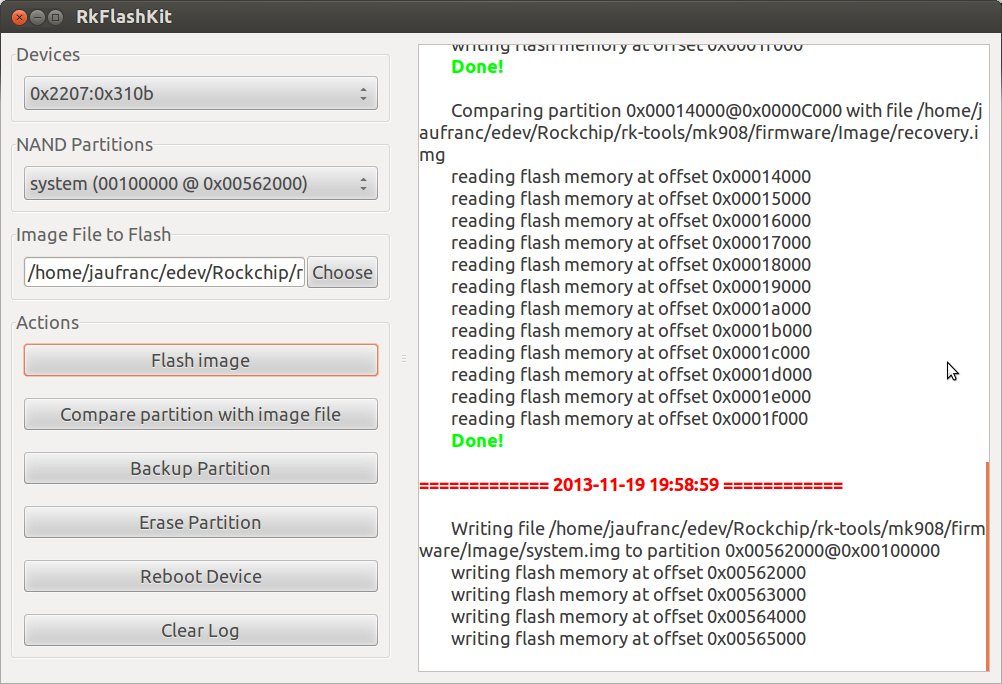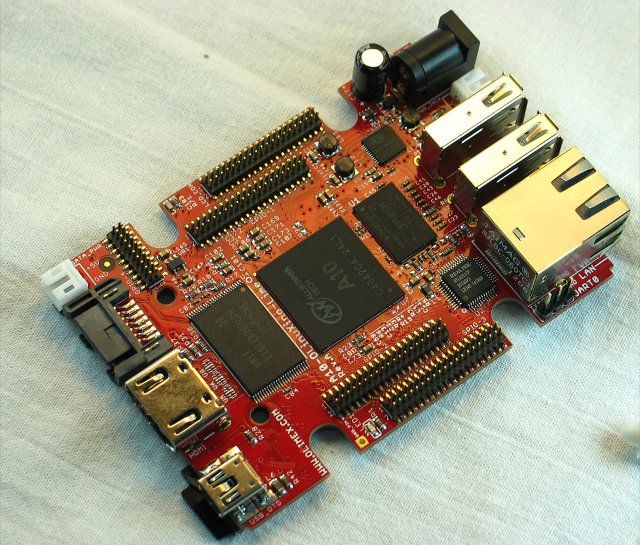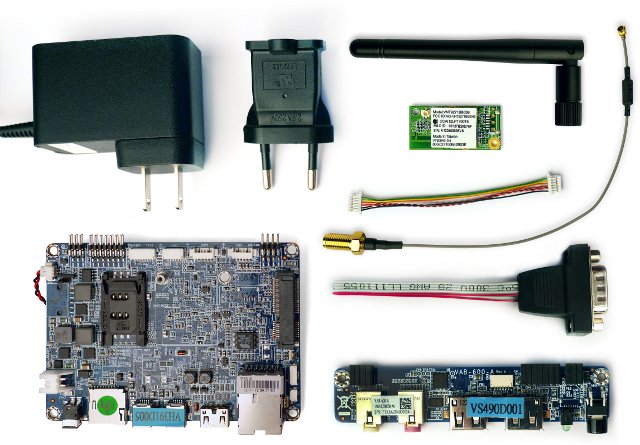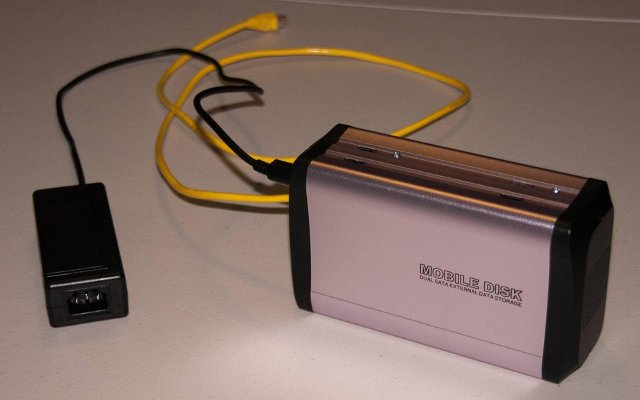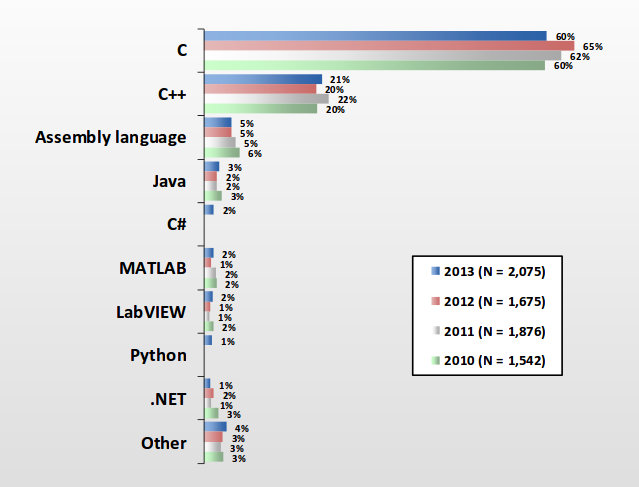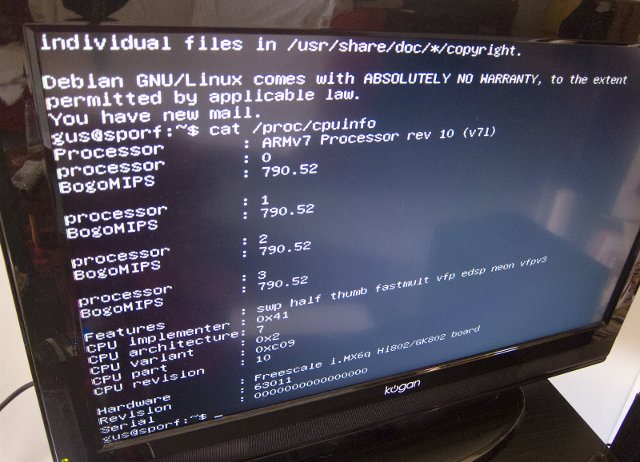Rockchip provides 2 tools to update the flash: RkBatchTool – Used to upgrade firmware with a single file RkAndroidTool – Used to flash the NAND flash with image corresponding to particular partition, e.g. system.img. kernel.img, boot.img. recovery.img. etc… One problem is that the company only provides these tools for Windows, so if you’re using a Linux based operating systems, you’d have to run a Windows XP or 7 virtual machine in VirtualBox or VMWare, which is an inconvenience, and requires a license in theory. To work around this issue, I’ve tried to use ReactOS, an open source operating systems compatible with Windows XP, but although the USB drivers appeared to install properly, RKAndroidTool failed to recognized my device (MK908). But a member of Mini PCs community informed me about a tool called RkFlashKit, written in Python and using GTK, that can flash firmware to Rockchip RK3066 and RK3188 devices in […]
Olimex Announces 30 Euros A10-OLinuXino-LIME Development Board for December
The Raspberry Pi, Beaglebone Black and Cubieboard are probably the best selling ARM Linux boards in the sub $50 category, but they’ll soon be joined by Olimex A10-OLinuXino-LIME powered by AllWinner A10 ARM Cortex A8 SoC with 512MB RAM that will sell for 30 Euros (About $40) when it becomes available in December. Another version of the board based on AllWinner A20 dual core Cortex A7 SoC, called A20-OLinuXino-LIME will also be sold, adding Gigabit Ethernet, and scheduled for Q1 2014. Pricing has yet to be disclosed for the A20 version. A10-OLinuXino-LIME specifications: SoC – AllWinner A10 ARM Cortex-A8 @ 1GHz with Mali-400 GPU System Memory – 512MB DDR3 Storage – microSD card slot, SATA, and optional 4GB NAND Flash Video Output – HDMI 1080p USB – USB-OTG + 2x USB Hosts Connectivity – 10/100Mbit Ethernet Expansions – 200 GPIOs on 0.05″ connectors Misc – Lipo battery management and connector, […]
VIA Announces $99 Springboard Platform for Android and Linux Development
Back in May 2013, VIA unveiled VAB-600 Pico-ITX board powered by WonderMedia WM8950 with an ARM Cortex A9 processor @ 800 MHz and a Mali-400 GPU. At the time they provided a starter kit with a 7″ display. The company has now announced the VIA Springboard Platform based on VAB-600 that is available without Wi-Fi for $99 or with Wi-Fi for $129. Here are the items included in the kits: VAB-600 Pico-ITX board with WM8950, 1GB DDR3 SDRAM, 4GB eMMC Flash memory and microSD slot. See VAB-600 post for detailed specifications. VIA VAB-600-A I/O extender card: 1 x Line-Out jack 1 x Mic-In jack 2 x USB 2.0 A-type ports 1 x Suspend LED power indicator 1 x Power On/Off button 3 x board-to-board connectors 1 x USB board-to-board connector VIA VNT9271 Springboard USB WiFi module (Wi-Fi Kit only) – Supports IEEE 802.11b/g/n standards and 802.11e WiFi Multimedia (WMM). Based […]
Zyxel NSA310 / NSA320 Hackable Network Access Storages Run Debian Linux
Yesterday, we saw how to make a NAS enclosure for the Cubieboard, but DesertF0x commented “Better take a NSA-310 or NSA-320. It is easy to install Debian and it has Gigabit!”, and I decided to have a look. The 2 devices appear to have been released at the end of 2011, and are powered by a Marvell ARMv5 compatible processor. Many NAS are expensive kits, but NSA310 (1 bay) is currently available for $88.50 and NSA320 (2 bays) for $95.34 on Amazon, which is just a little cheaper than the DIY Cubieboard NAS solution (~100 USD). Price looks attractive, now let’s have a look at some technical details, and instructions to install Debian. Both NAS more or less share the same hardware specifications except for a few details: Processor – Marvell Kirkwood 88f6281 ARMV5-TE compliant processor @ 1.2 GHz (Hardware datasheet) System Memory – 256 MB (NAS310) or 512 MB […]
DIY NAS Enclosure for The Cubieboard
The Cubieboard with a 1GHz processor, 1GB RAM, a SATA port and its low price ($49) is probably one the best available options if you want to make your own ARM based NAS. The hardware is easy to get, most of the software components (Linux, SAMBA/NFS server, Bittorrent client, etc…) are available, but there are no NAS enclosure available for the Cubieboard, so this part may be a little tricky. Cubieforums user Vustus has a pretty neat and cost- effective solution for an enclosure based on off-the-shelf parts. If you want to try it yourself, you’ll need the following parts: 3.5″ USB 2.0 aluminum external dual SATA HDD enclosure ($15) – http://www.geeks.com/details.asp?InvtId=ET-3541S 10″ Flat SATA cable ($2.49) – http://www.newegg.com/Product/Product.aspx?Item=N82E16812119365 SATA Y cable for power ($4.99) – http://www.newegg.com/Product/Product.aspx?Item=N82E16812198015 Power cable for th Cubieboard (taken from PSP power supply, as a cable would cost about $7 according to vustus) ($4.29) – http://www.amazon.com/gp/product/B002TK3GH8 […]
2013 Embedded Market Study – Software Development & Processors
UBM releases a study of the embedded market every year, by surveying over 1,000 embedded professional every year. They’ve just published their 2013 Embedded Market Study (85 pages report), after surveying over 2,000 engineers and managers, so let’s see whether anything has evolved in the software development and processor space compared to 2012. Again this year, most respondents are based in the US (62%), followed by Europe (20%), and Asia (12%). C/C++ languages still rule the embedded world with 81% market share, although a little less than last year (85%), assembler is a distant third (5%). Interestingly, the average size of development teams seems to have shrunk from 15.9 in 2012 to 14.6 in 2013, the average project being composed of 4 software engineers, 2.9 hardware engineers, 2.7 firmware engineers, 2 QA/Test engineers, 1.5 system integrators, and 1.5 with other functions. About a third of project last less than 6 […]
Debian 7.0 Installer for Hi802 / GK802 mini PCs
We’ve had Ubuntu support on i.MX6 HDMI dongles, specifically HiApad Hi802 and Zealz GK802, for a little while, but for those who prefer Debian distribution, a Debian installer is now available thanks to Angus Gratton. Bear in mind that 2D/3D GPU acceleration is disabled in order to save 192MB RAM, as this image is mainly destined to server and/or robotic applications. If you need a desktop experience with GPU acceleration, you’d have to use Ubuntu, or you may try enable it in Debian, and see if it works, but this has not been tested. The instructions below are to be used with the internal microSD card, but if you’re ready to hack a bit around, it might be possible to run the installer from an external microSD or USB device thanks to Jasbir’s U-boot multiboot. You’d still need to use an internal microSD, but you’d only have to open the […]
Linaro 13.02 Release with Linux Kernel 3.8 and Android 4.2.2
Linaro 13.02 is now available, and features Linux Kernel 3.8 and Android 4.2.2. The biggest news this month is probably the first release of a preliminary ARM64 Debian/Ubuntu Raring image. Other noticeable items include work on ARMv7 KVM, more improvements to OpenEmbedded ARMv8 implementation, as well as big.LITTLE MP implementation, and some modifications to the toolchain for Cortex A7 support. Origen images are not available for download this month, and there’s still no ALIP images since they have disappeared since Linaro upgraded to Ubuntu Quantal. Here are the highlights of this release: Android AOSP master build for Galaxy Nexus has been setup All the platforms have been updated to 4.2.2 Support for lava-test-shell has been added to linaro-android-build-tools. Developer Platform CI bring up: ARMv7 KVM – Add Arndale hypervisor patch to u-boot-linaro. CI bring up: Arndale – Add Arndale image reports to LAVA, Enable and verify UEFI support in the […]


